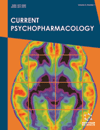
Full text loading...
We use cookies to track usage and preferences.I Understand
Epilepsy is the second most typical chronic disorder, described by recurrent seizures and uncontrolled electrical signaling from neurons in the cerebral cortex. Stimulated astrocytes, along with microglia, promote cytokines that cause neuroinflammation, leading to a chain reaction of subsequent steps involving neurons as well as endothelial cells along the blood-brain barrier. Inflammation in the brain’s neural network can cause convulsions and epilepsy. The migration of albumin proteins and the infiltration of peripheral immune cells from the serum into the brain disrupt BBB, which, in turn, activates astrocytes and microglia, which stimulate pro-inflammatory mediators like cytokines, chemokines, and other inflammatory mediators. They increase the glutamate level and cause an influx of calcium ions, leading to the production of less GABA and a decrease in the influx of chloride ions. These events exacerbate the inflammatory process that leads to neuronal excitability and contribute further to the development of epilepsy. In this review, we discuss how astrocytes, microglia, and neurons stimulate cytokines, chemokines, and other inflammatory mediators that play an essential role in the development of epilepsy. This review also explore how the permeability of the blood-brain barrier promotes neuroinflammation and contributes to epileptogenesis. The purpose of this review is to present knowledge on neuroinflammation so that new antiepileptic drugs can be developed to prevent this disorder.

Article metrics loading...

Full text loading...
References


Data & Media loading...

